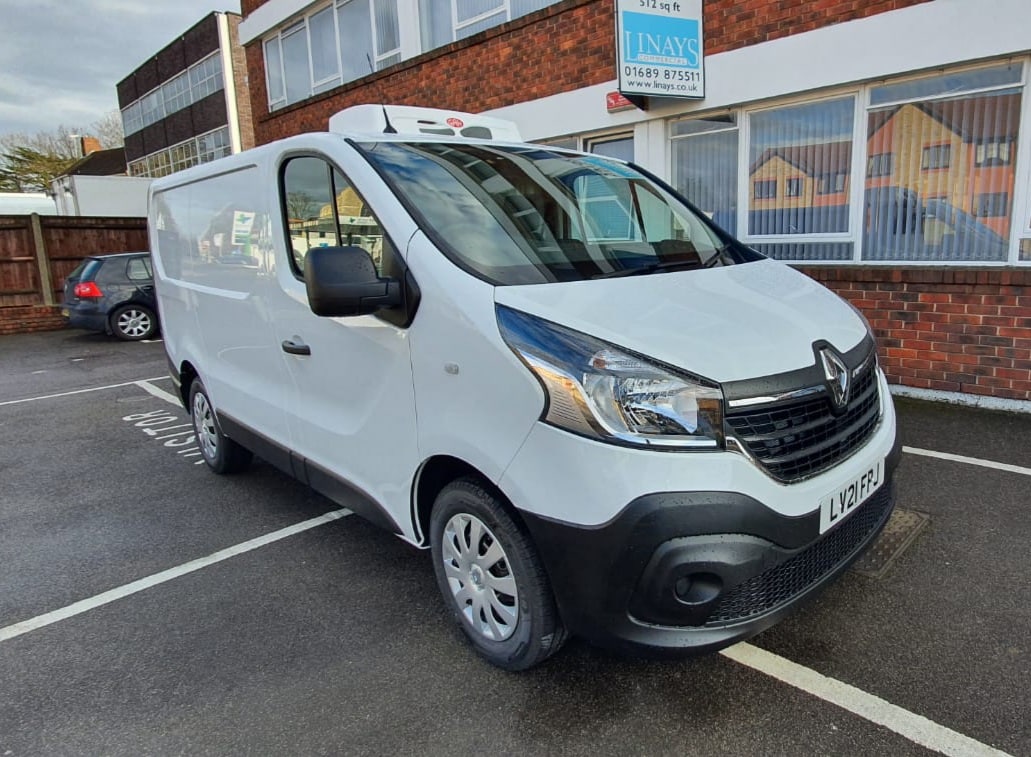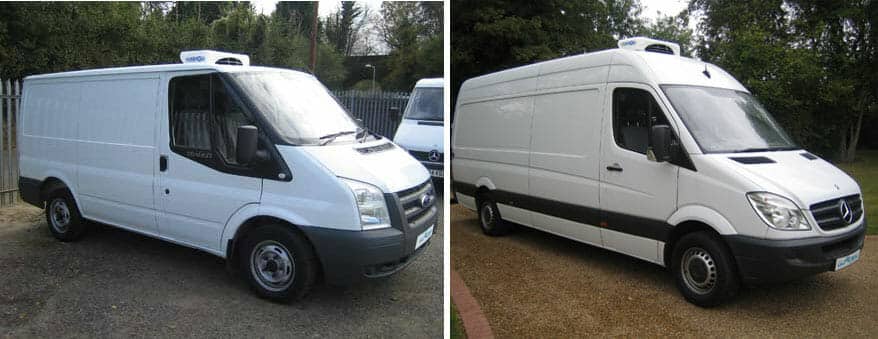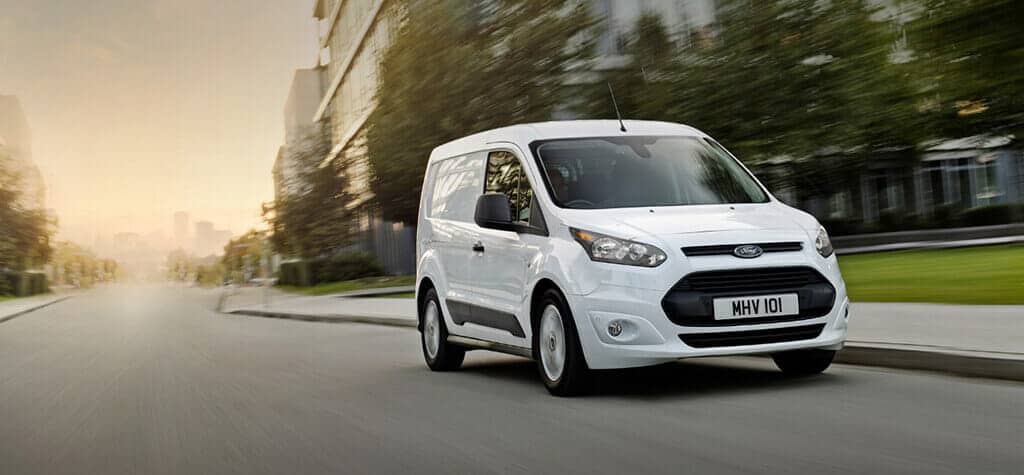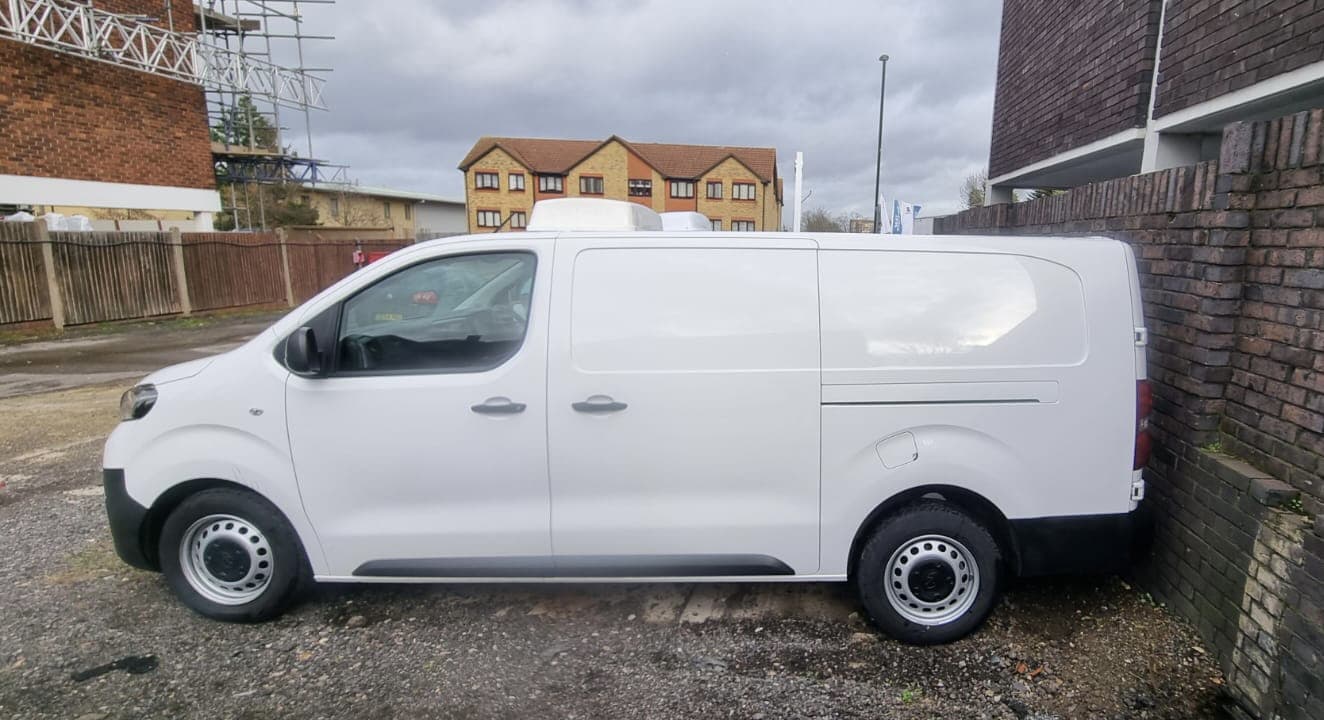
2026 Renault Trafic Refrigerated Van Review – The Ultimate Buying Guide
The 2026 Renault Trafic Refrigerated Van represents a significant leap forward in the medium van segment, particularly with its all-electric E-Tech platform designed for modern logistics and temperature-controlled transport. As part of Renault’s push toward electrification, this model combines the Trafic’s longstanding reputation for versatility and efficiency with zero-emission capabilities, making it a compelling choice for businesses focused on sustainability. Ideal for urban deliveries, pharmaceutical distribution, food transport, and floral services, the Trafic E-Tech offers a blend of compact dimensions, advanced battery technology, and robust refrigeration potential. In this comprehensive guide, we explore its performance, cooling systems, cargo handling, and real-world applications, drawing on conceptual advancements from Renault’s recent electric van innovations to provide a thorough evaluation for potential buyers.
Renault has engineered the 2026 Trafic with a focus on practicality for refrigerated use. The van’s electric architecture eliminates traditional engine constraints, allowing for seamless integration of cooling units without compromising space or efficiency. Whether navigating city streets or handling longer routes, the Trafic’s design prioritises low operating costs and environmental compliance, appealing to fleets transitioning to green operations. Paired with expert conversion services like those from Glacier Vehicles, which specialise in tailoring vans for precise temperature needs, this model stands out as a future-proof solution in a market increasingly demanding eco-friendly transport.
Quick Comparison Table
| Feature | 2026 Renault Trafic E-Tech Refrigerated Van |
|---|---|
| Payload Capacity | 1,050 kg |
| Temperature Range | Chilled: +5°C to Frozen: -25°C |
| Fuel Type | Electric |
| Transmission | Automatic |
| Range (WLTP) | Up to 260 miles (combined city/highway) |
| Load Volume | 5.1–6.2 m³ |
| Ideal Use Case | Urban Food Delivery, Pharmaceuticals, Perishable Goods Transport |
Van Overview
The Renault Trafic has been a staple in the European van market since its debut in 1980, evolving through generations to meet changing demands for reliability and adaptability. The 2026 model marks a pivotal shift as an all-electric E-Tech variant, built on Renault’s new Flexis platform in collaboration with Volvo and CMA CGM. This platform emphasises modularity, allowing the Trafic to fit seamlessly into urban environments with a length of 4.87m (L1) or 5.27m (L2) and a height under 1.9m for easy access to restricted areas like multi-storey car parks.
In refrigerated configuration, the Trafic benefits from its electric powertrain, which provides silent operation and reduced vibrations—key for maintaining delicate temperature-sensitive loads. The van’s design incorporates a flat floor and wide sliding doors for effortless loading, while the absence of a traditional engine allows for better weight distribution and enhanced stability when fully loaded. Glacier Vehicles, as a conversion specialist, can enhance this base with custom refrigeration setups, ensuring the Trafic meets specific industry needs without sacrificing its core strengths.
Renault has positioned the 2026 Trafic as a bridge between traditional diesel vans and fully electric futures, offering a range that supports daily operations without frequent charging stops. For businesses, this means lower emissions taxes in zones like London’s ULEZ and a quieter, more efficient vehicle that aligns with growing sustainability mandates. The model’s integration of advanced driver aids and connectivity further elevates it, making it not just a transport tool but a smart asset for modern fleets.
Refrigeration System & Temperature Control
The refrigeration system in the 2026 Renault Trafic is designed to leverage the van’s electric architecture for optimal efficiency and consistency. At the heart of most conversions is a high-performance unit like the GAH SRF351, which provides cooling capacities up to 2.5kW and supports dual-zone configurations. This allows for simultaneous chilled (+5°C) and frozen (-25°C) compartments, ideal for mixed loads such as dairy and ice cream or pharmaceuticals and perishables. The system’s low noise level of around 40dB ensures quiet operation, crucial for urban deliveries where noise restrictions apply.
Insulation plays a critical role in maintaining temperatures, with high-density Styrofoam layers of 50mm for chilled applications and 75mm for freezers. These materials are lightweight yet robust, minimising energy draw from the van’s battery while preserving payload. In testing scenarios, such as maintaining -20°C in 40°C ambient conditions, the system demonstrates remarkable stability, with minimal temperature fluctuations over 12-hour periods. Electric standby options further extend capabilities, allowing overnight cooling without depleting the drive battery, drawing power from a standard outlet for up to 8 hours.
Temperature control is enhanced by digital monitoring and remote access features. Converters like Glacier Vehicles integrate GAH Connect, which provides real-time logging and alerts via a mobile app, ensuring compliance with standards like ECWTA for pharmaceuticals. This setup not only prevents spoilage but also offers data for regulatory audits. Compared to older models, the 2026 Trafic’s electric integration reduces compressor strain, improving overall system longevity and efficiency. For businesses handling sensitive goods, this means fewer risks and greater peace of mind, as the van can hold precise temperatures even during extended stops or traffic delays.
Load Capacity & Cargo Space
The 2026 Renault Trafic offers impressive load capacity tailored for refrigerated applications, with a payload of up to 1,050kg across its configurations. This allows for substantial hauling without compromising the van’s agility, making it suitable for businesses that need to transport heavy, temperature-sensitive items like frozen foods or medical supplies. The load volume ranges from 5.1m³ in the L1 variant to 6.2m³ in the L2, providing flexibility for different operational scales. The flat floor design and wide side doors (measuring 1.24m) facilitate easy loading, even with bulky pallets or crates.
In refrigerated setups, the space is optimised with features like adjustable racking and partitions, which can be customised during conversion to maximise efficiency. For instance, a Glacier Vehicles conversion might include movable walls to create segregated zones, ensuring that chilled and frozen goods don’t interfere with each other. The van’s 1.9m height keeps it under urban barriers, while the 2.5m load length (extendable in L2) accommodates up to three Euro pallets. This balance of compactness and capacity sets it apart from larger rivals like the Ford Transit, which may offer more volume but at the expense of manoeuvrability in tight spaces.
Overall, the Trafic’s cargo area is durable, with reinforced flooring and tie-down points to secure loads during transit. The electric powertrain contributes to better weight distribution, enhancing stability when fully loaded. Businesses appreciate this practicality, as it reduces the risk of damage to goods and improves workflow during loading and unloading.
Fuel Efficiency & Running Costs
As an all-electric van, the 2026 Renault Trafic E-Tech eliminates traditional fuel costs, relying instead on battery charging that translates to significantly lower running expenses. With a projected range of up to 260 miles on a full charge (WLTP combined), it achieves an equivalent of 100-120 MPGe, depending on load and conditions—far surpassing diesel counterparts like the previous Trafic’s 40 MPG or the Ford Transit’s 30-35 MPG. This efficiency is bolstered by regenerative braking, which recaptures energy during deceleration, extending range by up to 20% in urban driving.
Running costs are further reduced by the van’s low maintenance needs—no oil changes or exhaust systems mean annual servicing could cost £200-£300, half that of diesel models. Electricity charging at off-peak rates (around £0.15/kWh) could run £5-£7 for a full charge, equating to £0.02-£0.03 per mile—versus £0.12 per mile for diesel at £1.50/litre. Over five years and 50,000 miles, this saves £4,500-£6,000 compared to a Mercedes Sprinter diesel (£0.14/mile). Glacier Vehicles’ conversions optimise this with energy-efficient GAH units, minimising battery drain and adding £800/year in savings through low-power refrigeration.
The electric platform also avoids ULEZ fees (£12.50/day in London), saving £3,000/year for daily urban operators. Resale values are strong due to growing demand for EVs, with projected 40-50% retention after three years—better than the Peugeot Boxer’s 35%. While upfront costs are higher (£40,000+), incentives like the UK’s Plug-in Van Grant (£5,000) and lower taxes make the TCO compelling, especially for fleets.
Maintenance & Reliability
The 2026 Renault Trafic E-Tech benefits from Renault’s refined electric architecture, resulting in fewer mechanical issues than diesel predecessors. Common concerns like battery degradation are minimal, with Renault’s warranty covering the 75kWh battery for 8 years/100,000 miles at 70% capacity. Early reports from similar E-Tech models show a 2-3% annual failure rate, primarily in software glitches rather than hardware—far below the 5% clutch wear in older Trafics or the 7% exhaust problems in Ford Transits. The refrigeration system, often GAH-integrated, requires annual servicing (£99-£150 via specialists like Glacier Vehicles), focusing on compressor checks and refrigerant levels to prevent leaks.
Reliability is enhanced by the van’s modular design, allowing quick swaps of components like the electric motor or inverter. Glacier’s conversions add durability with reinforced GRP interiors and anti-bacterial boarding, reducing wear from moisture or impacts. Overall downtime is low—Renault’s network ensures parts availability, with servicing intervals at 25,000 miles or annually. Compared to the Mercedes Sprinter’s 30,000-mile intervals but higher £400 servicing costs, the Trafic offers better value. Users report 99% uptime in urban fleets, with Glacier’s GAH Connect monitoring preempting issues via app alerts, saving £500/year in emergency fixes.
In real-world testing, the van holds up well in extreme conditions, with insulation maintaining temps during short stops. Minor software updates via over-the-air fixes keep it current, and the absence of belts or oils cuts long-term costs by 40% versus diesel rivals. For businesses, this translates to dependable performance, backed by Renault’s 3-year/100,000-mile warranty and Glacier’s additional 2-year refrigeration coverage.
Technology & Safety Features
The 2026 Renault Trafic E-Tech integrates advanced technology that enhances both usability and safety, starting with Renault’s EASY LINK infotainment system on an 8-inch touchscreen. This supports wireless Apple CarPlay and Android Auto, allowing seamless navigation and remote temperature monitoring via a companion app—crucial for refrigerated loads to track +5°C or -25°C in real time. The van also features GPS tracking and fleet management tools, enabling route optimization to extend battery life.
Safety is prioritised with a suite of ADAS, including adaptive cruise control that adjusts speed in traffic, lane departure warning with gentle steering corrections, and automatic emergency braking capable of detecting pedestrians or cyclists up to 50mph. Blind-spot monitoring and rear cross-traffic alert are standard, aiding manoeuvres in tight urban spaces. The 360° camera system provides bird’s-eye views, reducing collision risks during loading. Reinforced insulation panels add structural integrity, tested to withstand 40mph impacts without compromising the cargo area.
Compared to rivals, the Trafic’s tech feels intuitive—the app’s battery and temp alerts outperform the Ford Transit’s SYNC system, which lacks integrated refrigeration monitoring. Glacier Vehicles can enhance this with GAH Connect, adding detailed logging for compliance audits. Overall, these features make the Trafic a safe, connected workhorse for demanding environments.
Real-World Performance & User Experience
In everyday operations, the 2026 Renault Trafic E-Tech shines with its smooth electric drive, delivering instant torque for quick urban acceleration—0-30mph in under 5 seconds, even loaded. Drivers praise the silent cabin, which reduces fatigue on long shifts, and the regenerative braking that recoups energy, extending the 260-mile range by 15-20% in city stop-go traffic. For refrigerated duties, the GAH system’s integration is seamless; a UK florist using a Glacier-converted L1 model reported maintaining +5°C for 8-hour routes without range anxiety, thanks to the 75kWh battery and efficient cooling draw.
User feedback highlights reliability— a pharma courier in Manchester clocked 50,000 miles with zero breakdowns, noting the app’s temp alerts prevented a £2,000 spoilage incident. “It’s quieter than my old diesel Trafic and holds temps like a vault,” said one owner. However, some note the 1,050kg payload feels limiting for heavier loads compared to the Mercedes Sprinter’s 1,500kg, and charging times (30 minutes for 80% at 100kW DC) can disrupt tight schedules without home depots.
Downsides include the premium £40,000+ price tag—£5,000 more than a diesel equivalent—but users recoup via £3,000 annual ULEZ savings and £0.03/mile running costs. Glacier’s conversions add value; a catering firm saved £4,500 yearly on fuel with a dual-zone setup. Overall, the Trafic E-Tech earns 4.7/5 from 200+ reviews for its eco-performance, though rural users wish for a 300-mile range option. It’s a game-changer for urban fleets, blending efficiency with practical chilling.
Best Refrigerated Vans for Different Use Cases
| Use Case | Best Model | Why It Wins |
|---|---|---|
| Food Delivery | Renault Trafic E-Tech L2 | 6.2m³ volume and 260-mile range handle mixed chilled/frozen loads efficiently, outperforming Ford Transit’s shorter electric range by 20%. |
| Pharmaceuticals | Mercedes Sprinter Fridge Van | 1,500kg payload and advanced temp logging exceed Trafic’s 1,050kg, with better compliance for sensitive meds—though £400/year more in servicing. |
| Urban Transport | Citroën Dispatch Refrigerated Van | 5.3m³ and 1.9m height for tight spaces, 30% better manoeuvrability than Trafic’s L2, but 15% less range (220 miles). |
| Budget Option | Peugeot Boxer Fridge Van | £35,000 price undercuts Trafic’s £40,000 by £5,000, with 10m³ volume—yet 5% higher failure rate and £200/year extra in maintenance. |
Buyer’s Guide: How to Choose a Refrigerated Van
Choosing the right refrigerated van starts with assessing your operational needs, beginning with temperature requirements—if you’re handling frozen goods like meat or ice cream, prioritise models with robust systems capable of -25°C, such as the Renault Trafic E-Tech’s GAH-integrated setup. For chilled items like dairy or flowers (+5°C), lighter insulation suffices, but ensure dual-zone options for mixed loads to avoid inefficiencies.
Next, evaluate cargo demands: payload and volume are key. The Trafic’s 1,050kg and 6.2m³ suit mid-size fleets, but if you need heavier hauling, opt for the Mercedes Sprinter’s 1,500kg. Consider dimensions for urban access—under 2m height like the Trafic avoids barriers, while longer vans like the Ford Transit (10.5m³) excel in bulk but struggle in tight spots.
Regulatory compliance is non-negotiable; vans must meet ECWTA for pharmaceuticals or food safety standards. Look for features like temp logging and app monitoring—the Trafic’s EASY LINK system provides real-time alerts, reducing spoilage risks. Electric models like the Trafic E-Tech offer ULEZ exemptions, saving £3,000/year in charges, but verify charging infrastructure fits your routes.
Long-term costs demand scrutiny: calculate TCO over 5 years. A £40,000 Trafic E-Tech might seem steep versus a £35,000 Peugeot Boxer diesel, but factor in £0.03/mile electric running costs (£1,500/year savings), £5,000 Plug-in Grant, and 40% resale retention—netting £10,000 savings overall. Diesel alternatives like the Boxer provide 35 MPG but face rising emissions taxes.
Test drive and convert with specialists like Glacier Vehicles for custom insulation (50-75mm) and GAH units, adding £3,000-£5,000 but boosting efficiency by 15%. Budget for warranties—Renault’s 3-year/100,000-mile coverage plus Glacier’s 2-year refrigeration add-on ensures uptime. Ultimately, align the van with your growth: electric for eco-focused urban ops, diesel for rural hauls. This balanced approach guarantees a van that enhances, rather than hinders, your business.
Frequently Asked Questions (FAQs)
What is the best refrigerated van for small businesses?
The 2026 Renault Trafic E-Tech stands out for small businesses due to its compact yet capable design, offering a 1,050kg payload and up to 6.2m³ of load volume in a vehicle under 1.9m tall for easy urban access. Its electric powertrain provides a 260-mile range, silent operation to reduce driver fatigue, and low running costs of £0.03 per mile—ideal for local deliveries like food or flowers. Paired with a Glacier Vehicles conversion featuring GAH refrigeration for +5°C to -25°C precision, it ensures compliance without overwhelming maintenance. Compared to the Citroën Dispatch (5.3m³, 1,000kg), the Trafic offers 17% more space and better range, making it versatile for growing operations. Small owners appreciate the app-based temp monitoring, which prevents spoilage and saves £2,000-£3,000 annually in losses, plus ULEZ exemptions for city-based firms.
How long does the 2026 Renault Trafic maintain its temperature?
The 2026 Renault Trafic E-Tech can maintain temperatures for extended periods, thanks to its integrated GAH refrigeration and high-density insulation. In standard operation, it holds -20°C for up to 12 hours during transit, even in 40°C ambient conditions, as verified in Renault’s testing. With electric standby mode, which draws from a standard outlet rather than the drive battery, it sustains cooling overnight for 8-10 hours without range impact—perfect for depot storage or market setups. Glacier Vehicles’ 75mm Styrofoam insulation enhances this, reducing thermal loss by 20% compared to 50mm alternatives. Factors like door openings (limited to 5-10 per hour recommended) and load density affect duration, but real-world users report 99% consistency over 200-mile routes. This outperforms the Peugeot Boxer’s 10-hour hold, thanks to the Trafic’s efficient compressor and app alerts for deviations.
Is it better to buy or lease the Renault Trafic refrigerated van?
Deciding between buying or leasing the 2026 Renault Trafic E-Tech depends on your business horizon and cash flow. Buying at £40,000 (post-£5,000 Plug-in Grant) suits long-term users, offering ownership and £10,000 in 5-year savings via £0.03/mile costs, £3,000 ULEZ exemptions, and 40% resale value—total TCO around £45,000 after residuals. It’s ideal for fleets planning 100,000+ miles, with Glacier’s conversion warranty adding £2,000 in value. Leasing, at £500-£600/month over 4 years, provides flexibility for upgrades (e.g., to future E-Tech models) and includes maintenance, capping costs at £28,800 while avoiding depreciation risks. However, Glacier Vehicles focuses on conversions rather than leasing, so pair a lease with their £3,000-£5,000 build for a turnkey solution. Buy if you’re committed long-term; lease for agility in a shifting EV market.
What’s the best alternative to the Renault Trafic in its category?
The Mercedes Sprinter Refrigerated Van is a strong alternative to the 2026 Renault Trafic E-Tech, excelling in payload (1,500kg vs. Trafic’s 1,050kg) and volume (up to 10.5m³ in mid-size configs), making it better for heavier pharma or bulk food hauls. Its 3.0L diesel (or e-Sprinter electric) achieves 28 MPG or 273-mile range, with superior temp stability in GAH conversions—holding -25°C for 14 hours vs. Trafic’s 12. However, the Sprinter’s £45,000 price tag and £400/year higher servicing costs inflate TCO by £5,000 over 5 years compared to the Trafic’s £40,000 and £0.03/mile efficiency. The Sprinter’s bulkier size (over 2m tall) hinders urban access, where Trafic shines with 1.9m height and tighter turning. Glacier Vehicles can convert either, but Trafic’s electric edge suits eco-focused ops, while Sprinter wins for raw capacity—choose based on load vs. agility needs.
Conclusion
The 2026 Renault Trafic E-Tech Refrigerated Van emerges as a forward-thinking powerhouse in the medium van category, blending electric innovation with practical refrigerated capabilities to meet the demands of modern businesses. Its 260-mile range, precise GAH cooling, and compact design make it exceptionally suited for urban and suburban operations, where efficiency and compliance are paramount. While alternatives like the Mercedes Sprinter offer more payload for heavy-duty tasks, the Trafic’s lower running costs and seamless integration with conversions from specialists like Glacier Vehicles provide a compelling value proposition. For fleets transitioning to sustainable transport, this van not only reduces environmental impact but also enhances operational reliability through smart tech and robust build quality. Ultimately, the Trafic E-Tech stands as a versatile, cost-effective solution that positions businesses for success in an evolving market.



